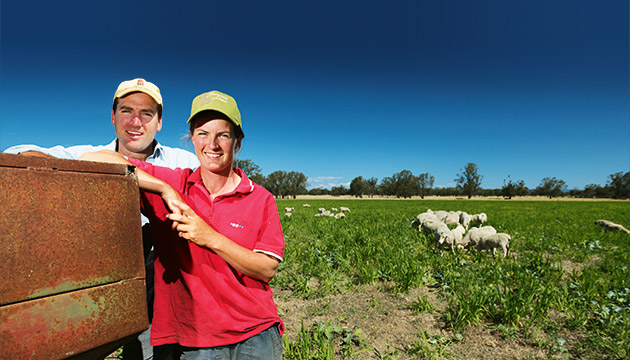A young brother and sister team in northern Victoria is establishing a great brand name for quality lamb: Yarallah.
Story By Ken Eastwood
When Victorian farmer John Marriott died of cancer at the age of 40, he left a legacy as vibrant and resilient as native grasses after summer rain. His legacy is in sinew and blood, and the strong hearts and passion for quality agriculture that he bestowed on his four children and wife Cath.
“He was passionately convinced – as we all are – about the long-term value of food production on healthy soil,” Cath says. “We love it – the pride and an ability to look around and say that every day in every way we are making things better.”
In the 1980s, John and Cath were stud Hereford and prime-lamb farmers near Lang Lang, 60 kilometres south-east of central Melbourne, as land prices around them rose and properties were split for hobby farms and holiday homes. John and Cath both shared a vision that if the family was interested in agriculture, the opportunities would be limited in Gippsland because the land was being given an amenity rather than an agricultural value. “We were interested in farming, not in sitting on land value,” Cath says.
So, in 1985, they bought 900-hectare “Yarallah”, near Benalla, about 70km east of Shepparton. Cath says the land had previously been overstocked, with a lot of cattle on it, “and it’s not good cattle country. It was so rough – there was no smell in the soil”. The day after they bought the property, John and Cath’s fourth child, Tom, was born, joining siblings Catherine, Hannah and Charlie.
Cath says John was a farmer ahead of his time, aiming to farm without chemicals and artificial inputs to build a “robust, resilient, regenerative system”. “We use minimal inorganic fertilisers and use an increasingly modest amount of herbicide,” she says. John would limit ploughing in order to encourage native grasses that sequester carbon and hold it in the soil.
“We also built a passive solar house 24 years ago because John said, ‘We can’t afford to keep using the energy of the world without a renewable form of managing it’,” Cath says. They had a wood-fired stove for cooking, and a positive outlook on the ebbs and flows of good and bad seasons.
This story excerpt is from Issue #81
Outback Magazine: Feb/Mar 2012










